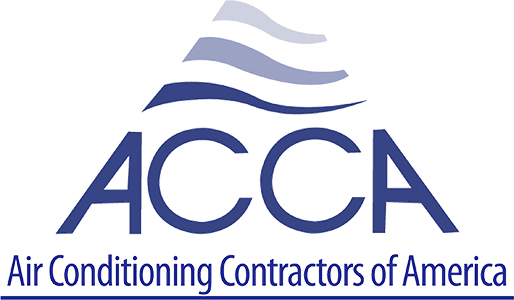Having the entire family at home, all day, every day can put excessive strain on our heating, cooling, and plumbing systems. With increased bathing, dishwashing, and laundry, the demand for hot water has never been greater. So, it seems like the perfect time to discuss a source of abundant hot water, the tankless water heater, and the myths that surround it.
Tankless water heaters are all the rage. And it’s no wonder why.
You get better efficiency and endless hot water, with a unit that doesn’t occupy much more space than a large suitcase.
These features and benefits are what most people think about when they consider exchanging their storage type water heater for a tankless. No brainer, right? After years of tankless water heater installs, we’ve found that some consumers have expectations, realistic or otherwise, that should be addressed before deciding to go tankless.
Myth #1:These things are “plug & play.” You can pretty much hook up to whatever is there from your old water heater.
Tankless water heaters are not a simple “swap out”. Most conventional gas water heaters were not installed with a tankless retrofit in mind. In fact, your home’s gas piping, gas meter, and gas line to the meter may not be sized appropriately to handle the high gas load that will be replacing the conventional storage gas water heater. Most conventional natural-draft water heaters vent exhaust completely different than any tankless water heater, and though they are a fuel burning appliance, they do need power to operate.
When a homeowner is unhappy with a tankless water heater, it usually concerns the issues above, and managing expectations about how their tankless water heater should perform. Not all tankless water heaters are the same. An improperly installed unit may not only underperform but be a safety hazard as well.
Myth #2: Tankless water heaters deliver hot water faster. That’s why they are sometimes called “instant hot water heaters.”
Somehow “instant” has replaced the word “tankless” in the minds of many consumers. The fact is, when a tankless is taking the place of a conventional water heater in its existing location, it will not deliver hot water to your faucet any faster. If it took a long time before, it will still take a long time to get there unless that issue was specifically addressed.
Some brands will only fire up when they sense flow. In this case there can be an additional few seconds of wait time before hot water reaches a faucet. In some cases, a tankless water heater is located in a completely different location than the old water heater. The distance from the water heater to the faucet will determine the time it takes for hot water to reach the faucet.
If water does take a long time to get to a faucet, the real solution is to add a circulation system to your water’s heat source. Luckily, some tankless models are designed so that a circulation system can be added without reconfiguring piping or adding an additional buffer tank.
Myth #3: All tankless water heaters are pretty much the same.
Throughout the years, tankless water heaters have become more reliable, cost effective, and in some cases an easier installation. Some brands are better than others for certain applications. There are now models that offer more firepower, while keeping equipment and installation costs down. Other brands are less reliable and have very poor product support. Some will require more extensive maintenance than others, which should be considered when evaluating the cost of ownership.
From my experience, no matter the quality of the unit, if the quality of installation is poor you will always get poor performance. So how do you find out which brands are best? A great resource is a plumbing/HVAC company that has a good reputation and stands behind their work. Most likely, they’ll want to keep their customers happy with good service and superior products. Companies like this typically use brands that are worth considering.
Myth #4: Replacing a water heater with a tankless water heater doesn’t need to be permitted and inspected.
I cannot speak for all jurisdictions, but here in the Puget Sound area they do. If you’re not sure it’s required, call up your local permitting office and ask them. They may require a mechanical permit, gas piping permit, and electrical permit depending on the local jurisdiction and what was required to install the new appliance. Remember, you are replacing a 40,000 BTU tank with something that uses up to 199,999 BTUs of gas. It produces exhaust and carbon monoxide and vents completely different. For your safety and health, it is best to follow the local authority’s requirements for permit and inspection.
Tankless water heaters are all the rage, and for good reason. They offer efficient, comfortable, and continual hot water for home or business. Before you step up to tankless, make sure you understand the difference between fact and fiction.
Seek out a reputable plumbing/HVAC company.
Most offer free estimates by a knowledgeable staff member who will address any concern you may have, help you chose the correct size and brand for your application, and give you a realistic expectation when it comes to the performance of a tankless water heater. With proper guidance you can make a well-informed decision that will hopefully meet your needs… and your expectations. Enjoy!
Bruce Davis Jr.
General Manager
Day & Nite Plumbing & Heating, Inc.
Bruce Davis Jr. is a second-generation plumber and HVAC technician. He earned his Commercial
Plumbing License and later became N.A.T.E. Certified and E.P.A. Refrigerant Certified for HVAC service and repair for commercial and residential HVAC appliances. Bruce has years of experience as an HVAC Technician, Boiler Technician, and Plumber. He is now General Manager for the company he has been with his entire career and oversees the Plumbing, Heating, and Air Conditioning business for Day & Nite Plumbing & Heating, Inc.











